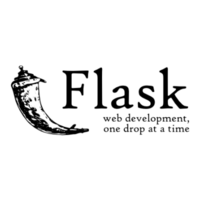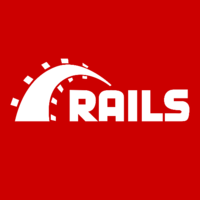What is Kestrel and what are its top alternatives?
Top Alternatives to Kestrel
 NGINX
NGINXnginx [engine x] is an HTTP and reverse proxy server, as well as a mail proxy server, written by Igor Sysoev. According to Netcraft nginx served or proxied 30.46% of the top million busiest sites in Jan 2018. ...
 Falcon
FalconFalcon is a minimalist WSGI library for building speedy web APIs and app backends. We like to think of Falcon as the Dieter Rams of web frameworks. ...
 Mantis
MantisIt is a free web-based bug tracking system. It provides a delicate balance between simplicity and power. Users are able to get started in minutes and start managing their projects while collaborating with their teammates and clients effectively. ...
 Owin
OwinIt is a standard for an interface between .NET Web applications and Web servers. It is a community-owned open-source project. ...
 MySQL
MySQLThe MySQL software delivers a very fast, multi-threaded, multi-user, and robust SQL (Structured Query Language) database server. MySQL Server is intended for mission-critical, heavy-load production systems as well as for embedding into mass-deployed software. ...
 PostgreSQL
PostgreSQLPostgreSQL is an advanced object-relational database management system that supports an extended subset of the SQL standard, including transactions, foreign keys, subqueries, triggers, user-defined types and functions. ...
 MongoDB
MongoDBMongoDB stores data in JSON-like documents that can vary in structure, offering a dynamic, flexible schema. MongoDB was also designed for high availability and scalability, with built-in replication and auto-sharding. ...
 Redis
RedisRedis is an open source (BSD licensed), in-memory data structure store, used as a database, cache, and message broker. Redis provides data structures such as strings, hashes, lists, sets, sorted sets with range queries, bitmaps, hyperloglogs, geospatial indexes, and streams. ...
Kestrel alternatives & related posts
NGINX
- High-performance http server1.5K
- Performance894
- Easy to configure730
- Open source607
- Load balancer530
- Free289
- Scalability288
- Web server226
- Simplicity175
- Easy setup136
- Content caching30
- Web Accelerator21
- Capability15
- Fast14
- High-latency12
- Predictability12
- Reverse Proxy8
- Supports http/27
- The best of them7
- Great Community5
- Lots of Modules5
- Enterprise version5
- High perfomance proxy server4
- Embedded Lua scripting3
- Streaming media delivery3
- Streaming media3
- Reversy Proxy3
- Blash2
- GRPC-Web2
- Lightweight2
- Fast and easy to set up2
- Slim2
- saltstack2
- Virtual hosting1
- Narrow focus. Easy to configure. Fast1
- Along with Redis Cache its the Most superior1
- Ingress controller1
- Advanced features require subscription10
related NGINX posts
Our whole DevOps stack consists of the following tools:
- GitHub (incl. GitHub Pages/Markdown for Documentation, GettingStarted and HowTo's) for collaborative review and code management tool
- Respectively Git as revision control system
- SourceTree as Git GUI
- Visual Studio Code as IDE
- CircleCI for continuous integration (automatize development process)
- Prettier / TSLint / ESLint as code linter
- SonarQube as quality gate
- Docker as container management (incl. Docker Compose for multi-container application management)
- VirtualBox for operating system simulation tests
- Kubernetes as cluster management for docker containers
- Heroku for deploying in test environments
- nginx as web server (preferably used as facade server in production environment)
- SSLMate (using OpenSSL) for certificate management
- Amazon EC2 (incl. Amazon S3) for deploying in stage (production-like) and production environments
- PostgreSQL as preferred database system
- Redis as preferred in-memory database/store (great for caching)
The main reason we have chosen Kubernetes over Docker Swarm is related to the following artifacts:
- Key features: Easy and flexible installation, Clear dashboard, Great scaling operations, Monitoring is an integral part, Great load balancing concepts, Monitors the condition and ensures compensation in the event of failure.
- Applications: An application can be deployed using a combination of pods, deployments, and services (or micro-services).
- Functionality: Kubernetes as a complex installation and setup process, but it not as limited as Docker Swarm.
- Monitoring: It supports multiple versions of logging and monitoring when the services are deployed within the cluster (Elasticsearch/Kibana (ELK), Heapster/Grafana, Sysdig cloud integration).
- Scalability: All-in-one framework for distributed systems.
- Other Benefits: Kubernetes is backed by the Cloud Native Computing Foundation (CNCF), huge community among container orchestration tools, it is an open source and modular tool that works with any OS.
We chose AWS because, at the time, it was really the only cloud provider to choose from.
We tend to use their basic building blocks (EC2, ELB, Amazon S3, Amazon RDS) rather than vendor specific components like databases and queuing. We deliberately decided to do this to ensure we could provide multi-cloud support or potentially move to another cloud provider if the offering was better for our customers.
We’ve utilized c3.large nodes for both the Node.js deployment and then for the .NET Core deployment. Both sit as backends behind an nginx instance and are managed using scaling groups in Amazon EC2 sitting behind a standard AWS Elastic Load Balancing (ELB).
While we’re satisfied with AWS, we do review our decision each year and have looked at Azure and Google Cloud offerings.
#CloudHosting #WebServers #CloudStorage #LoadBalancerReverseProxy
- Python13
- FAST11
- Minimal10
- Open source8
- REST oriented8
- Well designed8
- Powerful6
- Really Light Weight6
- Documentation5
- Easy to develop and maintain applications5
- Easy to get started3
- Easy to deploy3
- Its simple while not limited2
- Faster1
- Kkk0
related Falcon posts
Hello All, I have concerns about which framework to use in my case. I'm working on a project that uses TensorFlow for implementing CNN and image processing, it also deals with a huge dataset. Shall I implement the rest APIs in Phalcon because of its speed and great performance or Falcon since I'm working with TensorFlow and doing image processing steps?
PS: APIs are to receive the image from the user, and call *.py files to execute image processing steps and CNN Thanks In Advance :D
I'm planning on building an android app using Flutter (I will be making ios too later) It's a social media type application. I'm confused about what framework to choose from Django, Flask and Falcon.
(please inform if I should provide more detail about something)
- Easy to use1
- Open Source1
- Free1
related Mantis posts
related Owin posts
Hi, I have an old web app written in HTML and JavaScript and hosted at Microsoft IIS. But due to some restrictions on the production environment, we can not enable IIS. I tried to create an Owin app and hosted it in a desktop service and everything is working fine. But I am not aware of the Pros and Cons of using OWIN app and hosting in windows service. Can anyone please tell me the Pros and Cons of using OWIN interface and windows service and also if there are any other alternatives available and why should I go for that alternative? Note: All of my web app pages are static pages. Thanks, Nirbhay
- Sql800
- Free679
- Easy562
- Widely used528
- Open source490
- High availability180
- Cross-platform support160
- Great community104
- Secure79
- Full-text indexing and searching75
- Fast, open, available26
- Reliable16
- SSL support16
- Robust15
- Enterprise Version9
- Easy to set up on all platforms7
- NoSQL access to JSON data type3
- Relational database1
- Easy, light, scalable1
- Sequel Pro (best SQL GUI)1
- Replica Support1
- Owned by a company with their own agenda16
- Can't roll back schema changes3
related MySQL posts
When I joined NYT there was already broad dissatisfaction with the LAMP (Linux Apache HTTP Server MySQL PHP) Stack and the front end framework, in particular. So, I wasn't passing judgment on it. I mean, LAMP's fine, you can do good work in LAMP. It's a little dated at this point, but it's not ... I didn't want to rip it out for its own sake, but everyone else was like, "We don't like this, it's really inflexible." And I remember from being outside the company when that was called MIT FIVE when it had launched. And been observing it from the outside, and I was like, you guys took so long to do that and you did it so carefully, and yet you're not happy with your decisions. Why is that? That was more the impetus. If we're going to do this again, how are we going to do it in a way that we're gonna get a better result?
So we're moving quickly away from LAMP, I would say. So, right now, the new front end is React based and using Apollo. And we've been in a long, protracted, gradual rollout of the core experiences.
React is now talking to GraphQL as a primary API. There's a Node.js back end, to the front end, which is mainly for server-side rendering, as well.
Behind there, the main repository for the GraphQL server is a big table repository, that we call Bodega because it's a convenience store. And that reads off of a Kafka pipeline.
Hello, I am building a website for a school that's used by students to find Zoom meeting links, view their marks, and check course materials. It is also used by the teachers to put the meeting links, students' marks, and course materials.
I created a similar website using HTML, CSS, PHP, and MySQL. Now I want to implement this project using some frameworks: Next.js, ExpressJS and use PostgreSQL instead of MYSQL
I want to have some advice on whether these are enough to implement my project.
- Relational database764
- High availability510
- Enterprise class database439
- Sql383
- Sql + nosql304
- Great community173
- Easy to setup147
- Heroku131
- Secure by default130
- Postgis113
- Supports Key-Value50
- Great JSON support48
- Cross platform34
- Extensible33
- Replication28
- Triggers26
- Multiversion concurrency control23
- Rollback23
- Open source21
- Heroku Add-on18
- Stable, Simple and Good Performance17
- Powerful15
- Lets be serious, what other SQL DB would you go for?13
- Good documentation11
- Scalable9
- Reliable8
- Intelligent optimizer8
- Free8
- Transactional DDL7
- Modern7
- One stop solution for all things sql no matter the os6
- Relational database with MVCC5
- Faster Development5
- Full-Text Search4
- Developer friendly4
- Open-source3
- search3
- Great DB for Transactional system or Application3
- Free version3
- Excellent source code3
- Relational datanbase3
- Text2
- Full-text2
- Can handle up to petabytes worth of size1
- Multiple procedural languages supported1
- Composability1
- Native0
- Table/index bloatings10
related PostgreSQL posts
Hello, I am building a website for a school that's used by students to find Zoom meeting links, view their marks, and check course materials. It is also used by the teachers to put the meeting links, students' marks, and course materials.
I created a similar website using HTML, CSS, PHP, and MySQL. Now I want to implement this project using some frameworks: Next.js, ExpressJS and use PostgreSQL instead of MYSQL
I want to have some advice on whether these are enough to implement my project.
Our whole DevOps stack consists of the following tools:
- GitHub (incl. GitHub Pages/Markdown for Documentation, GettingStarted and HowTo's) for collaborative review and code management tool
- Respectively Git as revision control system
- SourceTree as Git GUI
- Visual Studio Code as IDE
- CircleCI for continuous integration (automatize development process)
- Prettier / TSLint / ESLint as code linter
- SonarQube as quality gate
- Docker as container management (incl. Docker Compose for multi-container application management)
- VirtualBox for operating system simulation tests
- Kubernetes as cluster management for docker containers
- Heroku for deploying in test environments
- nginx as web server (preferably used as facade server in production environment)
- SSLMate (using OpenSSL) for certificate management
- Amazon EC2 (incl. Amazon S3) for deploying in stage (production-like) and production environments
- PostgreSQL as preferred database system
- Redis as preferred in-memory database/store (great for caching)
The main reason we have chosen Kubernetes over Docker Swarm is related to the following artifacts:
- Key features: Easy and flexible installation, Clear dashboard, Great scaling operations, Monitoring is an integral part, Great load balancing concepts, Monitors the condition and ensures compensation in the event of failure.
- Applications: An application can be deployed using a combination of pods, deployments, and services (or micro-services).
- Functionality: Kubernetes as a complex installation and setup process, but it not as limited as Docker Swarm.
- Monitoring: It supports multiple versions of logging and monitoring when the services are deployed within the cluster (Elasticsearch/Kibana (ELK), Heapster/Grafana, Sysdig cloud integration).
- Scalability: All-in-one framework for distributed systems.
- Other Benefits: Kubernetes is backed by the Cloud Native Computing Foundation (CNCF), huge community among container orchestration tools, it is an open source and modular tool that works with any OS.
- Document-oriented storage829
- No sql594
- Ease of use554
- Fast465
- High performance410
- Free255
- Open source219
- Flexible180
- Replication & high availability145
- Easy to maintain112
- Querying42
- Easy scalability39
- Auto-sharding38
- High availability37
- Map/reduce31
- Document database27
- Easy setup25
- Full index support25
- Reliable16
- Fast in-place updates15
- Agile programming, flexible, fast14
- No database migrations12
- Easy integration with Node.Js8
- Enterprise8
- Enterprise Support6
- Great NoSQL DB5
- Support for many languages through different drivers4
- Schemaless3
- Aggregation Framework3
- Drivers support is good3
- Fast2
- Managed service2
- Easy to Scale2
- Awesome2
- Consistent2
- Good GUI1
- Acid Compliant1
- Very slowly for connected models that require joins6
- Not acid compliant3
- Proprietary query language2
related MongoDB posts
Recently we were looking at a few robust and cost-effective ways of replicating the data that resides in our production MongoDB to a PostgreSQL database for data warehousing and business intelligence.
We set ourselves the following criteria for the optimal tool that would do this job: - The data replication must be near real-time, yet it should NOT impact the production database - The data replication must be horizontally scalable (based on the load), asynchronous & crash-resilient
Based on the above criteria, we selected the following tools to perform the end to end data replication:
We chose MongoDB Stitch for picking up the changes in the source database. It is the serverless platform from MongoDB. One of the services offered by MongoDB Stitch is Stitch Triggers. Using stitch triggers, you can execute a serverless function (in Node.js) in real time in response to changes in the database. When there are a lot of database changes, Stitch automatically "feeds forward" these changes through an asynchronous queue.
We chose Amazon SQS as the pipe / message backbone for communicating the changes from MongoDB to our own replication service. Interestingly enough, MongoDB stitch offers integration with AWS services.
In the Node.js function, we wrote minimal functionality to communicate the database changes (insert / update / delete / replace) to Amazon SQS.
Next we wrote a minimal micro-service in Python to listen to the message events on SQS, pickup the data payload & mirror the DB changes on to the target Data warehouse. We implemented source data to target data translation by modelling target table structures through SQLAlchemy . We deployed this micro-service as AWS Lambda with Zappa. With Zappa, deploying your services as event-driven & horizontally scalable Lambda service is dumb-easy.
In the end, we got to implement a highly scalable near realtime Change Data Replication service that "works" and deployed to production in a matter of few days!
We use MongoDB as our primary #datastore. Mongo's approach to replica sets enables some fantastic patterns for operations like maintenance, backups, and #ETL.
As we pull #microservices from our #monolith, we are taking the opportunity to build them with their own datastores using PostgreSQL. We also use Redis to cache data we’d never store permanently, and to rate-limit our requests to partners’ APIs (like GitHub).
When we’re dealing with large blobs of immutable data (logs, artifacts, and test results), we store them in Amazon S3. We handle any side-effects of S3’s eventual consistency model within our own code. This ensures that we deal with user requests correctly while writes are in process.
- Performance887
- Super fast542
- Ease of use514
- In-memory cache444
- Advanced key-value cache324
- Open source194
- Easy to deploy182
- Stable165
- Free156
- Fast121
- High-Performance42
- High Availability40
- Data Structures35
- Very Scalable32
- Replication24
- Pub/Sub23
- Great community22
- "NoSQL" key-value data store19
- Hashes16
- Sets13
- Sorted Sets11
- Lists10
- NoSQL10
- Async replication9
- BSD licensed9
- Integrates super easy with Sidekiq for Rails background8
- Bitmaps8
- Open Source7
- Keys with a limited time-to-live7
- Lua scripting6
- Strings6
- Awesomeness for Free5
- Hyperloglogs5
- Runs server side LUA4
- Transactions4
- Networked4
- Outstanding performance4
- Feature Rich4
- Written in ANSI C4
- LRU eviction of keys4
- Data structure server3
- Performance & ease of use3
- Temporarily kept on disk2
- Dont save data if no subscribers are found2
- Automatic failover2
- Easy to use2
- Scalable2
- Channels concept2
- Object [key/value] size each 500 MB2
- Existing Laravel Integration2
- Simple2
- Cannot query objects directly15
- No secondary indexes for non-numeric data types3
- No WAL1
related Redis posts
StackShare Feed is built entirely with React, Glamorous, and Apollo. One of our objectives with the public launch of the Feed was to enable a Server-side rendered (SSR) experience for our organic search traffic. When you visit the StackShare Feed, and you aren't logged in, you are delivered the Trending feed experience. We use an in-house Node.js rendering microservice to generate this HTML. This microservice needs to run and serve requests independent of our Rails web app. Up until recently, we had a mono-repo with our Rails and React code living happily together and all served from the same web process. In order to deploy our SSR app into a Heroku environment, we needed to split out our front-end application into a separate repo in GitHub. The driving factor in this decision was mostly due to limitations imposed by Heroku specifically with how processes can't communicate with each other. A new SSR app was created in Heroku and linked directly to the frontend repo so it stays in-sync with changes.
Related to this, we need a way to "deploy" our frontend changes to various server environments without building & releasing the entire Ruby application. We built a hybrid Amazon S3 Amazon CloudFront solution to host our Webpack bundles. A new CircleCI script builds the bundles and uploads them to S3. The final step in our rollout is to update some keys in Redis so our Rails app knows which bundles to serve. The result of these efforts were significant. Our frontend team now moves independently of our backend team, our build & release process takes only a few minutes, we are now using an edge CDN to serve JS assets, and we have pre-rendered React pages!
#StackDecisionsLaunch #SSR #Microservices #FrontEndRepoSplit
Our whole DevOps stack consists of the following tools:
- GitHub (incl. GitHub Pages/Markdown for Documentation, GettingStarted and HowTo's) for collaborative review and code management tool
- Respectively Git as revision control system
- SourceTree as Git GUI
- Visual Studio Code as IDE
- CircleCI for continuous integration (automatize development process)
- Prettier / TSLint / ESLint as code linter
- SonarQube as quality gate
- Docker as container management (incl. Docker Compose for multi-container application management)
- VirtualBox for operating system simulation tests
- Kubernetes as cluster management for docker containers
- Heroku for deploying in test environments
- nginx as web server (preferably used as facade server in production environment)
- SSLMate (using OpenSSL) for certificate management
- Amazon EC2 (incl. Amazon S3) for deploying in stage (production-like) and production environments
- PostgreSQL as preferred database system
- Redis as preferred in-memory database/store (great for caching)
The main reason we have chosen Kubernetes over Docker Swarm is related to the following artifacts:
- Key features: Easy and flexible installation, Clear dashboard, Great scaling operations, Monitoring is an integral part, Great load balancing concepts, Monitors the condition and ensures compensation in the event of failure.
- Applications: An application can be deployed using a combination of pods, deployments, and services (or micro-services).
- Functionality: Kubernetes as a complex installation and setup process, but it not as limited as Docker Swarm.
- Monitoring: It supports multiple versions of logging and monitoring when the services are deployed within the cluster (Elasticsearch/Kibana (ELK), Heapster/Grafana, Sysdig cloud integration).
- Scalability: All-in-one framework for distributed systems.
- Other Benefits: Kubernetes is backed by the Cloud Native Computing Foundation (CNCF), huge community among container orchestration tools, it is an open source and modular tool that works with any OS.


































